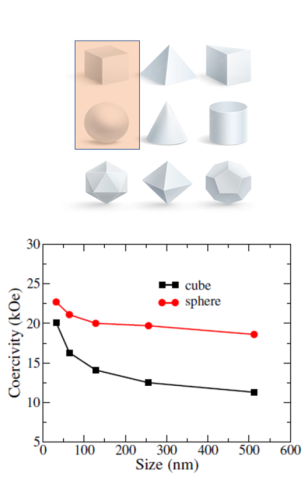CMI researchers from Ames National Laboratory conducted the activity for this highlight
Innovation
Enhancement of coercivity in (La,Ce)-Fe-B magnets from theory through grain size and grain boundary phase control.
Achievement
The (La,Ce)-Fe-B material may achieve coercivity as high as 11-14 kOe if sufficiently small grains, along with a high degree of alignment can be achieved. This novel result depends critically on the availability of a grain boundary phase (GBP) of greatly reduced, or even absent, magnetization. One target GBP is antiferromagnetic (La,Ce)6Fe13X (X=Al, Ga, Cu, etc.) with a tetragonal structure.
Significance and Impact
- Criticality and cost: the material has only resource-rich non-critical rare earth, La and Ce, in addition to non-critical elements iron and boron.
- The developed (La,Ce)-Fe-B magnets may partially replace rare earth (RE) magnets with critical RE such as (Nd,Pr,Dy,Tb)-Fe-B and also reduce cost.
Hub Goal Addressed
Eliminating critical rare-earth content in permanent magnets through substitution and microstructure control.

